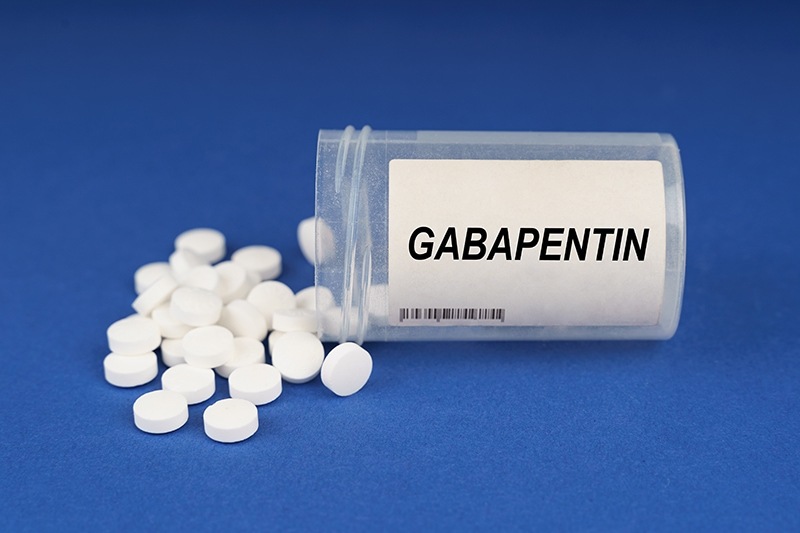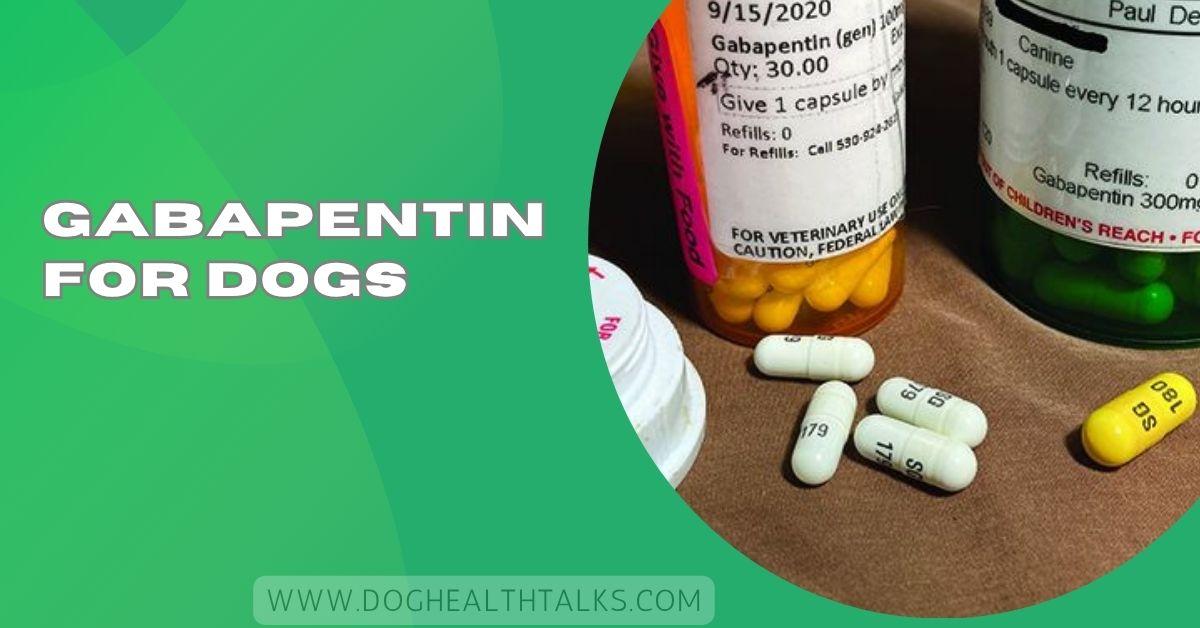Gabapentin is a gentle yet powerful medication that veterinarians often prescribe to help dogs manage pain, anxiety, and seizures. Originally developed for humans, it has become a trusted “off-label” treatment in veterinary care because of its calming and pain-relieving effects.
Gabapentin for dogs is a veterinarian-prescribed medication used to manage pain, anxiety, and seizures. Though not FDA-approved for pets, it’s generally safe and effective when given under veterinary guidance, especially for epilepsy and chronic pain relief.
When used correctly under a vet’s guidance, gabapentin is safe, effective, and can greatly improve your furry friend’s quality of life. Understanding how it works and when to use it can make a big difference in your dog’s health and happiness.
Gabapentin is a human medication that veterinarians commonly prescribe “off-label” for dogs. It belongs to a class of drugs known as anticonvulsants and analgesics—meaning it helps control seizures and manage pain. Though not FDA-approved for animals, it’s been widely studied and safely used in veterinary medicine for many years.
Gabapentin works by calming overactive nerve signals in the brain and spinal cord. This effect helps reduce chronic pain, prevent seizures, and lower anxiety in dogs experiencing stress or discomfort.

Veterinarians use gabapentin to treat several common health issues in dogs, including chronic pain, nerve pain, anxiety, and seizures. It can be given alone or combined with other medications for stronger results.
Gabapentin is often prescribed when other treatments stop working or cause side effects. It’s gentle on the body, easy to dose, and well-tolerated by most dogs.
Gabapentin helps reduce the frequency and severity of seizures, especially in dogs who don’t respond well to other anticonvulsant drugs. It’s not usually a first-line treatment but rather an add-on medication that supports existing seizure control therapies like phenobarbital or potassium bromide.
By calming nerve activity, gabapentin minimizes electrical overstimulation in the brain—helping prevent seizures and improving neurological stability over time. Many pet parents notice fewer seizures and smoother recovery periods once gabapentin becomes part of their dog’s routine.
Also Read: Can I Give My Dog Ibuprofen – Vets Reveal the Answer (2025)
Gabapentin shines as a pain management medication, particularly for chronic or neuropathic pain—pain caused by damaged or overactive nerves. It’s often used for dogs with arthritis, hip dysplasia, degenerative joint disease, or post-surgery recovery.
When combined with anti-inflammatory drugs or opioids, gabapentin provides synergistic relief. It helps dogs move easier, rest better, and enjoy life again without constant discomfort. Because it’s gentle on the stomach, it’s also a good choice for dogs that can’t tolerate NSAIDs.
For dogs struggling with anxiety—whether it’s separation anxiety, thunderstorm fear, or stress at the vet—gabapentin can be a game-changer. It relaxes the nervous system and promotes calmness without heavy sedation.
Many veterinarians recommend giving gabapentin a few hours before stressful events. It can be safely combined with behavioral training, pheromone diffusers, or anxiety wraps for extra comfort. The goal is a happier, more confident dog who feels secure even in challenging situations.

Gabapentin is generally safe when prescribed by a veterinarian, but like any medication, it may cause mild side effects in some dogs. The most common is drowsiness or sedation. Your dog may seem more tired or relaxed than usual, especially during the first few doses.
Other rare side effects include:
- Mild wobbliness or unsteady walking
- Upset stomach or vomiting
- Slight loss of coordination
These effects usually fade as your dog’s body adjusts. However, if your dog becomes excessively weak or unresponsive, contact your vet immediately. Dogs with kidney or liver disease may need lower doses, as gabapentin takes longer to leave their system.
Avoid stopping gabapentin suddenly—especially if it’s used for seizure control. Gradual dose reduction prevents withdrawal symptoms and rebound seizures.
Gabapentin dosage varies depending on your dog’s size, health, and condition. It’s available in several strengths—typically 100 mg, 300 mg, or 400 mg capsules—and can also be compounded into custom doses for smaller dogs.
A typical dosage is 5 to 10 mg per pound, given every 8 to 12 hours. Always follow your vet’s instructions carefully, as exact dosing may differ.
Important reminders:
- Never use human liquid gabapentin unless confirmed safe by your vet. Some versions contain xylitol, which is toxic to dogs.
- Gabapentin works quickly—most dogs feel relief within 1–2 hours.
- The effects usually last up to 8–12 hours.
If you forget a dose, give it as soon as you remember—unless it’s almost time for the next one. Do not double up doses.
Must Read: How Much Baby Aspirin Can I Give My Dog: Vet Advice Inside
Yes. In fact, veterinarians often prescribe gabapentin and trazodone together to help manage severe anxiety or pain. Trazodone is another calming medication that works by balancing serotonin levels, while gabapentin eases nerve pain and promotes relaxation.
This combination is particularly helpful for:
- Dogs recovering from surgery
- Dogs anxious during travel or vet visits
- Dogs with chronic anxiety disorders
When used under a vet’s guidance, this pair is both safe and effective. Always follow dosage recommendations and monitor your dog for excess sedation.
Combining CBD oil and gabapentin is not recommended without veterinary supervision. Both can increase sedation when used together, which may make your dog overly drowsy or disoriented.
While CBD can provide natural relief for pain or anxiety, it’s best to choose one approach at a time unless your vet specifically approves both. Always discuss any supplements, oils, or new medications before adding them to your dog’s routine.
In recent years, veterinarians have shifted from tramadol to gabapentin for pain relief. Research suggests that tramadol may not effectively control chronic pain in dogs—especially arthritis pain.
Gabapentin, on the other hand, works directly on nerve pathways, offering more consistent relief for long-term pain. Many vets also combine gabapentin with anti-inflammatories for enhanced results.
Ultimately, the “better” option depends on your dog’s individual needs, but gabapentin is now the preferred choice for managing chronic or nerve-related pain.

Gabapentin is not available over the counter for dogs. It’s a prescription medicine that must be given only under a vet’s guidance. Never buy or use human gabapentin without your veterinarian’s advice.
The gabapentin dosage for dogs usually depends on their body weight. Vets often prescribe 5–10 mg per kilogram, given every 8–12 hours. Always follow your veterinarian’s exact dosage chart for your dog’s safety.
Read Out: Distemper In Dogs – Early Signs Every Dog Owner Should Know
Common side effects of gabapentin include sleepiness, wobbliness, or mild tiredness. Some dogs may also show loss of balance. These effects are usually mild and fade as your dog’s body gets used to the medicine.
Gabapentin is safe when prescribed correctly, but an overdose can be dangerous. Giving too much may cause extreme sleepiness, weakness, or breathing trouble. Always follow your vet’s directions and never give extra doses.
Vets usually recommend 5–10 mg of gabapentin per pound or kilogram of your dog’s weight, depending on the condition. Your vet will choose the best dose to make sure it works safely for your pet.
The typical dosage of gabapentin for dogs varies with size and health needs. Most dogs take it every 8–12 hours for pain, anxiety, or seizures. Your vet will guide you on the correct dose and timing.
Gabapentin helps calm nerves, easing pain, anxiety, and seizures so your dog feels more relaxed and comfortable.
Gabapentin usually starts working within one to two hours, helping your dog feel calmer or experience pain relief.
Yes, gabapentin helps reduce nerve pain and discomfort caused by hip dysplasia, improving your dog’s movement and comfort.
Vets usually prescribe 5–10 mg per kilogram of body weight every 8–12 hours, depending on your dog’s condition.
Avoid mixing gabapentin with CBD oil, antacids, or sedatives unless your vet specifically approves and monitors the combination.
No, it’s not instant but usually starts helping within 1–2 hours after giving the dose as directed.
Gabapentin may cause drowsiness, wobbly walking, or mild tiredness, especially when first starting the medication.
Common vet-prescribed anxiety medicines include gabapentin, trazodone, and fluoxetine, depending on your dog’s specific anxiety needs.
Gabapentin stays in a dog’s system for about 8–12 hours, though it may last longer in dogs with health issues.
Gabapentin has become a trusted and effective medication for managing pain, anxiety, and seizures in dogs. When prescribed and monitored by a veterinarian, it can significantly improve your dog’s comfort, mobility, and quality of life. Although it’s not an over-the-counter medicine, gabapentin is safe and well-tolerated when used correctly. Always follow your vet’s dosage instructions carefully and watch for mild side effects like sleepiness or wobbliness.
Never give human versions or adjust doses on your own—your veterinarian knows the safest plan for your pet. With the right use, gabapentin can help your furry friend live a happier, more relaxed, and pain-free life.
